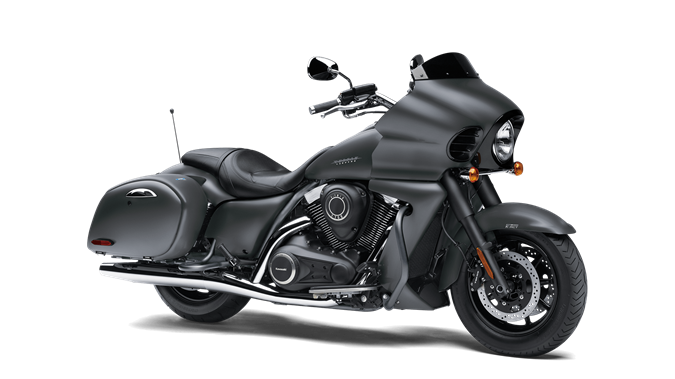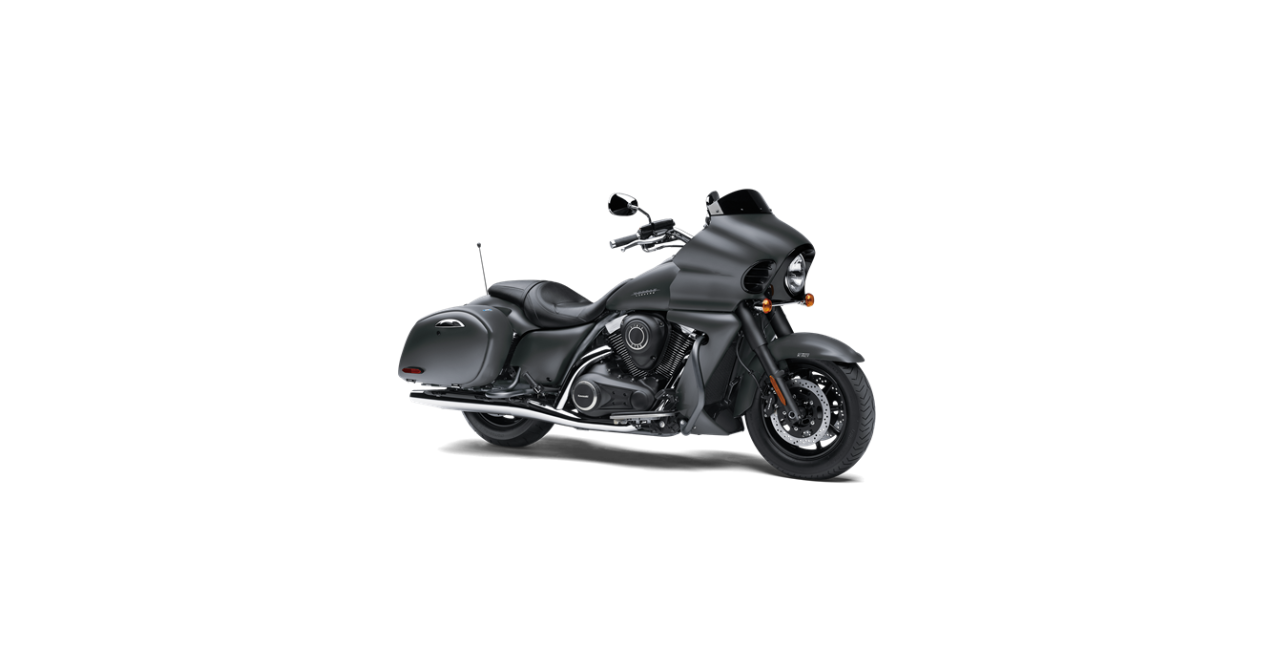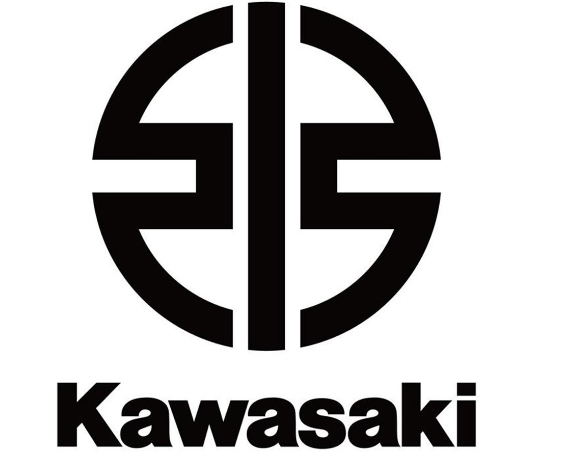2022 Kawasaki Vulcan 1700 Vaquero ABS Daily Checks

Daily Checks
Check the following items each day before you ride. The time required is minimal, and habitual performance of these checks will help ensure you a safe, reliable ride. If any irregularities are found during these checks, contact an authorized Kawasaki dealer. Temporary measures methods are described on each page.
WARNING
Failure to perform these checks before the operation may result in serious damage or an accident. Always perform daily checks before operation.
DANGER
Exhaust gas contains carbon monoxide, a colorless, odorless poisonous Inhaling carbon monoxide can cause serious brain injury or gas. death. DO NOT run the engine in enclosed areas. Operate only in a well-ventilated area.
- Fuel: Adequate supply in tank, no leaks.
- Engine Oil: Oil level between level lines.
- Tires: Air pressure (when cold):

Install the air valve cap. - Nuts, Bolts, Fasteners: Check that steering and suspension components, axles, and all controls are properly tightened or fastened.
- Steering: Action smooth but not loose from lock to lock. No binding of control cables.
- Brakes: Brake pad wear: Lining thickness more than 1 mm (0.04 in.) left. No brake fluid leakage.
- Throttle: Throttle grip plays 2 3 mm (0.08 0.12 in.).
- Clutch: No clutch fluid leakage.
- Coolant: No coolant leakage. Coolant level between level lines (when the engine is cold).
- Electrical Equipment: All lights (Headlight, Brake/Tail Light, Turn Signal Lights, License Plate Light, Warning/indicator Lights) and horn work.
- Engine Stop Switch: Stops engine.
- Side Stand: Returns to its fully up position by spring tension. Return spring is not weak or not damaged.
Additional Considerations for High-Speed Operation
WARNING
Handling characteristics of a motorcycle at high speeds may vary from those you are familiar with at legal highway speeds. Do not attempt high speed operation unless you have received sufficient training and have the required skills.
- Brakes: The importance of the brakes, especially during high-speed operation, cannot be overemphasized. Check to see that they are correctly adjusted and functioning properly.
- Steering: Looseness in the steering can cause loss of control. Check to see that the handlebar turns freely but has no play.
- Tires: High-speed operation is hard on tires, and good tires are crucial for riding safety. Examine their overall condition, inflate them to the proper pressure, and check the wheel balance.
- Fuel: Have sufficient fuel for high fuel consumption during high-speed operation.
- Engine Oil: To avoid engine seizure and the resulting loss of control, make sure that the oil level is at the upper-level line.
- Coolant: To avoid overheating, check that the coolant level is at the upper-level line.
- Electrical Equipment: Make sure that the headlight, brake/tail light, turn signal lights, license plate light, horn, etc., all work properly.
- Miscellaneous: Make sure that all nuts and bolts are tight and that all safety-related parts are in good condition.

